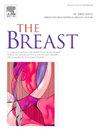聚氨酯泡沫包覆假体乳房切除术后乳房前重建并发症的预后、适应证及预测因素
IF 7.9
2区 医学
Q1 OBSTETRICS & GYNECOLOGY
引用次数: 0
摘要
基于植物的乳房重建(IBR)是乳房切除术后最常见的重建策略。手术技术和材料的进步使得乳房切除术皮瓣的灌注和厚度得到改善,并重新引起了对乳房重建(PBR)的兴趣。本研究的目的是分析保留皮肤或乳头的乳房切除术采用预先聚氨酯泡沫涂层植入物直接植入(DTI)的手术结果。方法回顾性研究2020 - 2022年间连续行乳房切除术后IBR-DTI预涂聚氨酯泡沫种植体的患者。纳入标准为术前捏片试验>;0.8 cm和灌注良好的乳房切除术皮瓣。术前放疗不是排除标准。如果需要紧急再干预,则将并发症分类为“严重”,如果只需要门诊治疗,则将其分类为“轻微”。结果共纳入250例患者,317例乳房重建。平均(±SD)年龄为50.5±10.9岁,平均BMI为23.8±4.0。平均随访时间12.2±1.2个月。主要并发症发生率为6.3%,感染为最常见的主要并发症(2.5%),其次为乳房切除术皮瓣坏死(1.6%)、出血(1.6%)和创面裂开(0.6%)。总体轻微并发症发生率为27.8%。在轻微并发症中,波纹最为常见(14.5%),其次是包膜挛缩(7.6%)、血肿形成(2.5%)、皮肤坏死(2.2%)、血肿(0.6%)和伤口开裂(0.3%)。在我们的队列中,DTI-PBR与PU植入物的主要并发症需要紧急再干预的风险为6.3%。甲状腺功能减退、糖尿病和超重已被确定为与并发症高风险相关的危险因素。本文章由计算机程序翻译,如有差异,请以英文原文为准。
Outcomes, indications and predictive factors for complications in postmastectomy prepectoral reconstructions with polyurethane foam-coated implants
Background
Implant-based reconstruction (IBR) is the most common reconstructive strategy following mastectomy. Advancements in surgical techniques and materials have led to improvement in perfusion and thickness of mastectomy skin flaps and they have renewed interest in prepectoral breast reconstruction (PBR).
The aim of this study was to analyze the surgical outcomes of skin or nipple-sparing mastectomies with direct-to-implant (DTI) reconstructions with prepectoral polyurethane foam–coated implants.
Methods
A retrospective study was conducted on consecutive patients undergoing postmastectomy IBR-DTI with prepectoral polyurethane foam-coated implants between 2020 and 2022. Inclusion criteria were a preoperative pinch test >0.8 cm and well-perfused mastectomy flaps. Preoperative radiation therapy was not an exclusion criterium. Complications were classified as “major” if they required urgent re-intervention, and as “minor” if they required only outpatient management.
Results
A total of 250 patients and 317 breast reconstructions were included. The mean (±SD) age was 50.5 ± 10.9 years with a mean BMI of 23.8 ± 4.0. The mean follow-up was 12.2 ± 1.2 months. The overall rate of major complications was 6.3 %, being infection the most common major complication (2.5 %), followed by mastectomy flap necrosis (1.6 %), bleeding (1.6 %), and wound dehiscence (0.6 %). The overall minor complications rate was 27.8 %. Across minor complications, rippling was recorded as the most common (14.5 %), followed by capsular contracture (7.6 %), seroma formation (2.5 %), skin necrosis (2.2 %), hematoma (0.6 %) and wound dehiscence (0.3 %).
Conclusion
In our cohort, DTI-PBR with PU implants had a 6.3 % risk of major complications requiring urgent re-intervention. Hypothyroidism, diabetes, and overweight have been identified as risk factors associated with higher risk of complications.
求助全文
通过发布文献求助,成功后即可免费获取论文全文。
去求助
来源期刊

Breast
医学-妇产科学
CiteScore
8.70
自引率
2.60%
发文量
165
审稿时长
59 days
期刊介绍:
The Breast is an international, multidisciplinary journal for researchers and clinicians, which focuses on translational and clinical research for the advancement of breast cancer prevention, diagnosis and treatment of all stages.
 求助内容:
求助内容: 应助结果提醒方式:
应助结果提醒方式:


